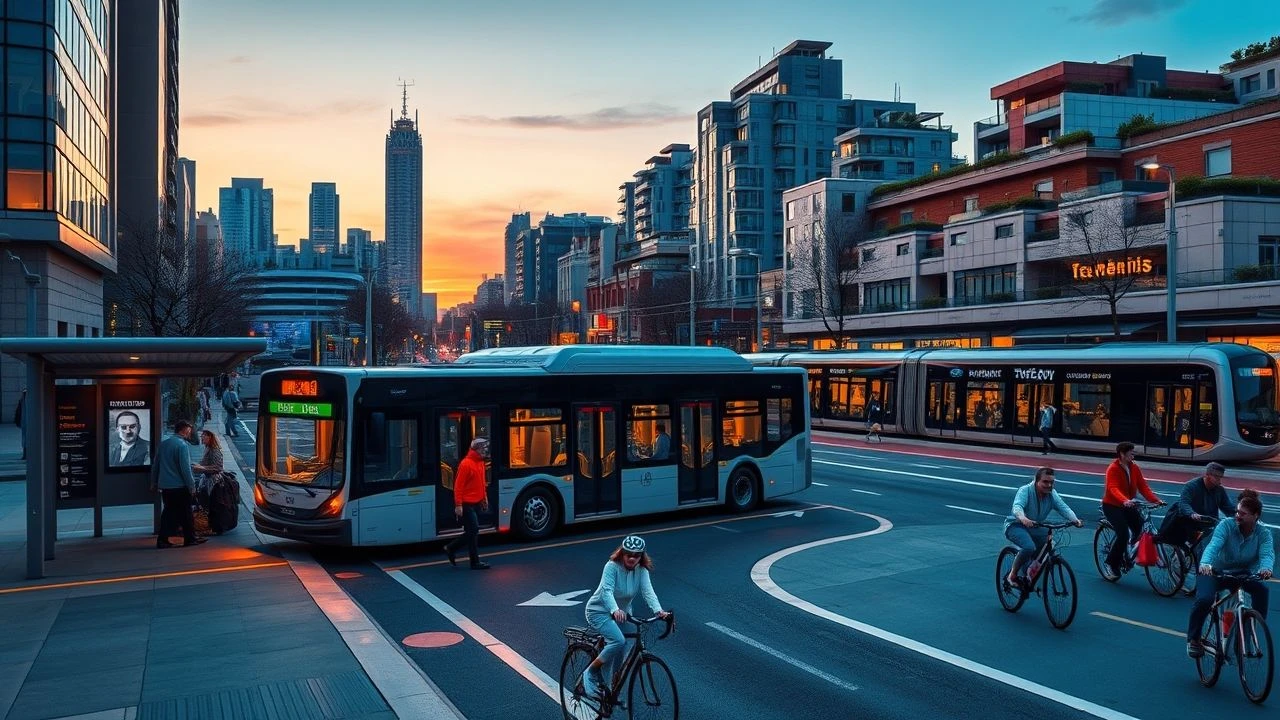
Professor Green, a leading expert in urban sustainability, puts it: "Sustainable transport is not just about environmental responsibility; it's about building more liveable, equitable, and economically vibrant cities for the future."
A key aspect of this revolution is infrastructure improvement. Think accessible ramps and lifts that are actually functional and well-maintained, not just ticked boxes. Updated signage, using clear language and visuals, benefits everyone, but is crucial for those with visual impairments or cognitive differences. And real-time tracking systems, providing accurate and up-to-the-minute information, are a game-changer for planning journeys, particularly for people with disabilities who might need extra time or assistance. A recent report from the Urban Mobility Forum highlights that 'investment in accessible infrastructure is not just a matter of compliance; it's an investment in social inclusion and economic opportunity.'
Furthermore, consider the voices of experts: Equitable transportation is a fundamental human right. It's about ensuring that everyone, including the elderly and individuals with disabilities, can participate fully in community life,
notes Dr. Anya Sharma, a leading urban planner.
These enhancements, championed by transport authorities across many a city, are not simply about adding features; it's about weaving inclusivity into the very fabric of the transport experience.
Transit-oriented development, or TOD as we often call it, is rapidly transforming how cities tackle congestion and champion public transport. The basic idea is simple: create vibrant, walkable neighbourhoods clustered around train stations, bus interchanges, and other transport hubs. These aren't just about easing commutes; they're about sparking economic growth, too.
Consider, for example, areas that have successfully implemented TOD strategies. You'll typically see a remarkable shift in local economies. Property values around transit hubs invariably experience an upswing, reflecting the increased desirability of convenient access to jobs, shops and leisure. Job growth often follows as businesses recognise the benefits of locating near transport links and a ready pool of potential employees.
Industry reports on urban development and sustainability consistently highlight the potent benefits of TOD. To put it simply, well-planned TOD schemes can breathe new life into communities. They can transform underutilised areas into attractive and vibrant economic centres. As one real estate developer noted, "TOD is not just about building near transit; it's about building communities that thrive because of it."
This is echoed by urban economists who emphasize that investing in TOD is investing in long-term, sustainable economic prosperity.
Data consistently reveals the benefits. One study showed a 20% increase in property values within a quarter-mile radius of a newly opened station. Another indicated a substantial rise in new businesses opening near the station within three years of the opening. TOD is rapidly emerging as a crucial element in any city's plan to conquer congestion and achieve truly sustainable urban development. It's about people and places, not just transport, and that's why it works so brilliantly.

AI in Healthcare: Revolutionizing Patient Care and Navigating Ethical Dilemmas
Rising Mental Health Awareness Demands Stronger Support Systems and Accessible Resources
Revamping America's Roads: Ambitious Plans to Modernize U.S. Transportation Infrastructure Take Center Stage
Navigating the AI Revolution: Why Regulation is Now Essential
AI Ethics: Tech Leaders and Ethicists Clash Over Algorithmic Bias and the Future of Responsible AI Development
Navigating the Ethical Minefield of Artificial Intelligence: A Call to Action